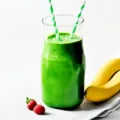Introduction
Smoothies have become an increasingly popular way for many people to increase their fruit and vegetable intake. Blended concoctions packed with produce, protein powders, and other mix-ins seem like an easy way to cram multiple servings of fruits and veggies into one tasty beverage.
But are smoothies really as healthy as they seem? As with most things in nutrition and health, the answer depends on the specific ingredients and portions.
The Potential Benefits
When made thoughtfully, smoothies can offer some advantages:
- Increased fruit and vegetable consumption – Blending produce into liquid form may help some people consume more servings than they would otherwise.
- Nutrient absorption – Some nutrients may be easier to absorb when vegetables and fruits are puréed and consumed without fiber.
- Convenience – Smoothies provide an easy, portable meal or snack when time is limited.
- Hydration – Fruits and vegetables have high water content, so smoothies can help with hydration.
The Potential Drawbacks
However, there are some potential downsides of smoothies to consider as well:
- Calories and sugar – Premade bottled smoothies can pack 400+ calories and contain 30+ grams of added sugars. Even homemade blends can deliver a concentrated dose of natural sugars from fruit that can lead to blood sugar spikes.
- Lack of protein and healthy fats – Many smoothies focus heavily on fruits and vegetables but lack adequate protein or healthy fats to balance out blood sugar response.
- Reduced satiety – The blended, liquid form of smoothies means they digest quickly, which can lead to hunger and overeating later.
- Tooth erosion – Frequent exposure to acidic ingredients like citrus fruits may erode tooth enamel over time.
- Lower fiber content – Blending breaks down insoluble fiber, reducing some of the gut health benefits.
Tips for Healthier Smoothies
To maximize nutritional value while minimizing drawbacks, here are some tips:
- Use mostly vegetables, not just fruit – Aim for a 2:1 veggie to fruit ratio.
- Add protein and healthy fats – Try nut butters, avocado, chia seeds, hemp seeds, Greek yogurt or protein powder.
- Watch added sugars – Limit higher sugar fruits and avoid adding honey, agave, or other sweeteners.
- Keep portions in check – 10-20 oz smoothies are often plenty – more can spike blood sugar.
- Consume with meals – Pairing smoothies with whole food snacks or meals can aid satiety and blood sugar regulation.
- Brush teeth afterward – Protect tooth enamel by brushing after acidic smoothies.
FAQ
Are smoothies better than juice?
Smoothies retain valuable fiber that juice lacks, providing more nutrients, antioxidants, and satiety. But both can be high in sugar without moderation.
Can I replace meals with smoothies?
Using meal replacement smoothies too often can cause blood sugar spikes and drops. It’s best to have a balanced meal first, then supplement with a smoothie.
How long do smoothies last?
Most smoothies last 24-48 hours refrigerated. Leafy green, vegetable-based blends may last 3-5 days. Monitor for spoilage before drinking older smoothies.
Do you need a powerful blender for smoothies?
Expensive blenders can yield very smooth textures, but affordable blenders can make great smoothies too. The key is adding enough liquid to achieve a drinkable consistency.
Are smoothies filling?
Smoothie fullness varies. Fruit/juice blends digest rapidly, causing hunger soon after. Smoothies with protein, fat and fiber are more filling and help regulate blood sugar.









